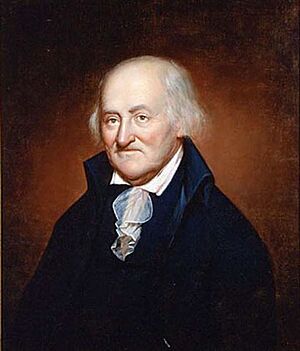Gadsden's Wharf facts for kids
Gadsden's Wharf is a historic wharf (a platform built out over water for ships to dock) located in Charleston, South Carolina. This important place was the first stop for an estimated 100,000 enslaved Africans during the busiest time of the international slave trade. Some historians believe that about 40% of all enslaved Africans brought to the United States first arrived at Gadsden's Wharf. For a time, it was the largest wharf in all of America. Today, the wharf is home to the South Carolina Aquarium and the International African American Museum, which opened in 2022.
Building the Wharf and the Arrival of Enslaved People
Christopher Gadsden started building this large wharf in the late 1760s. Over the next few years, he made it bigger, repaired it, and kept it updated until the American Revolution began.
In March 1787, the South Carolina General Assembly (the state's law-making body) stopped the arrival of enslaved people for three years. This ban was extended in 1800 until 1803. However, between 1803 and 1805, about 80 ships brought over 14,000 people to the area.
In 1806, the first newspaper advertisements for enslaved Africans being sold at Gadsden’s Wharf appeared. Later that same year, on February 17, 1806, the city of Charleston passed a rule. This rule stated that all ships carrying enslaved people had to land at Gadsden’s Wharf.
On January 1, 1808, a ban by the United States Congress on the arrival of enslaved people took effect. After this, Gadsden’s Wharf was used for other purposes. However, the trade of human beings continued in other ways until the 1860s.
Home of the International African American Museum
Joe Riley, who was the mayor of Charleston for a long time, first shared his idea for a museum. He wanted a museum dedicated to the history of African Americans in Charleston.
Almost 20 years later, a special ceremony was held in October to start building the museum. This happened after they successfully raised their goal of $100 million. Other early supporters of the museum included Congressman Jim Clyburn and Bernard Powers. Bernard Powers, a retired history professor from the College of Charleston, was named the first interim CEO of the International African American Museum.


